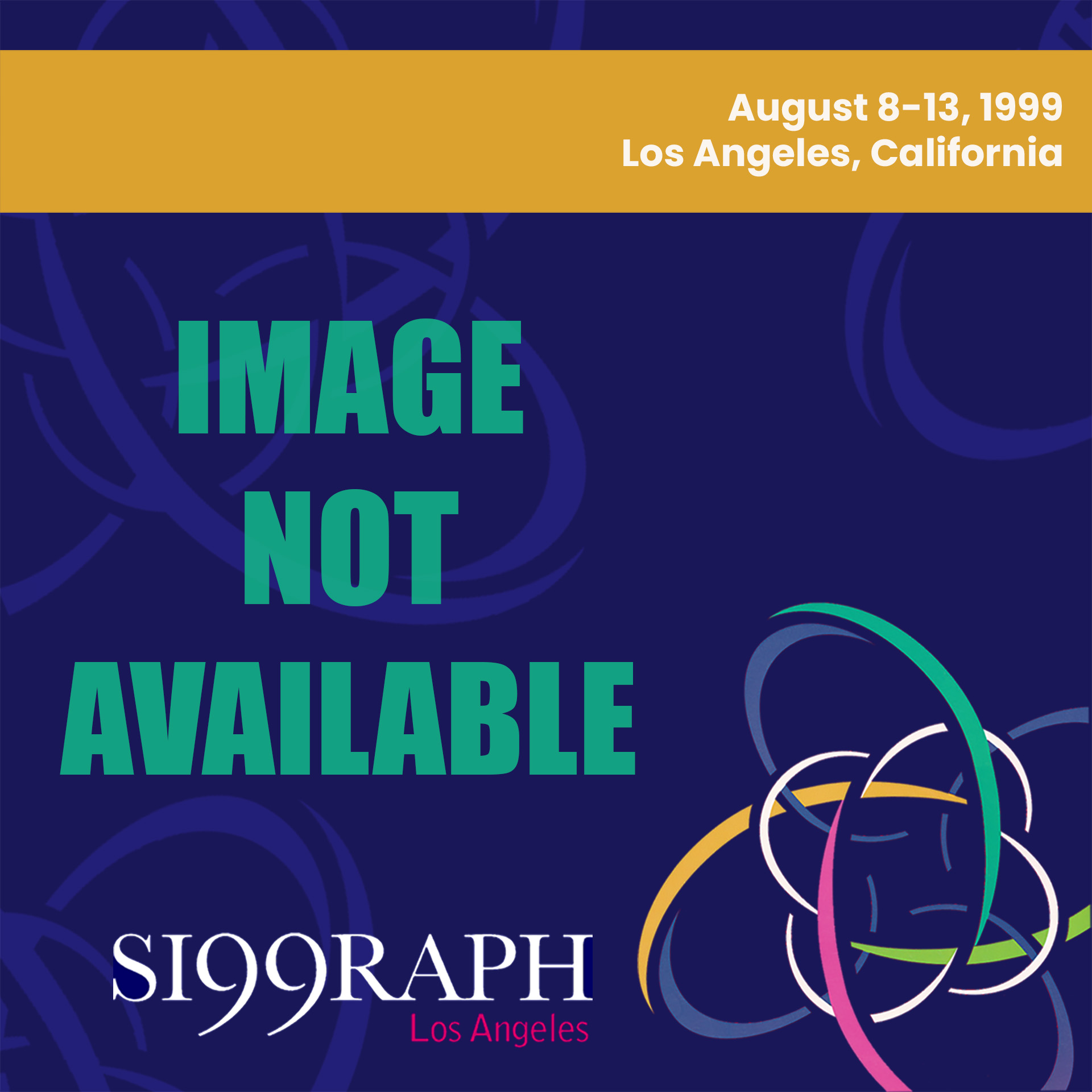“Educators Workshop in 3D Computer Graphics”
Conference:
Type(s):
Title:
- Educators Workshop in 3D Computer Graphics
Presenter(s)/Author(s):
Abstract:
This excerpt from a recent article in the “Toronto Globe & Mail” sets the stage for this workshop. The reporter interviewed a number of educators as well as production managers and technical directors in the film industry and included many quotes, such as:
“Today’s major animation studios and boutiques are insisting that employees be hybrid artists – individuals possessing both Bill Gates’ technical proficiency and Vincent Van Gogh’s artistic flare. It is a recent phenomenon that animators can not afford to ignore.”
Fueled by Hollywood’s demands, educational programs have begun to surface at a number of colleges and universities to help provide students with the skill sets necessary to meet these demands (both computer-related and technical). Many artists and would-be animators are now investing a lot of time and effort in seeking out educational programs that will allow them to learn and develop these skills.
But why wait until the college and university years to introduce this technology to hungry, creative minds? Why not introduce this technology at a much earlier stage so it can grow, develop, and mature prior to the time when one has to make career decisions?
A decade ago, general computer skills were introduced only at the college and university level, largely because of the high cost of computer hardware and software, and the relatively low budgets at the public school level. Today, with the availability of lower cost hardware and software, and in many cases donated software, kids have access to computer technology at a very early age. We now have young adults entering post-secondary programs who are fully prepared to study computer skills and applications at a much more advanced level. As a result, they have very bright futures ahead of them, in positions that are not only challenging and creative but very lucrative as well. These graduates are now designing the software of the future and creating award-winning effects in the movie industry.
Today, we recognize that this integration of computer technology into the classroom has been a great benefit, not only as a teaching tool but also as a doorway to creativity and exploration. Simply put, it’s fun as well as challenging. And it is this combination of fun and challenge that keeps these students motivated and eager to learn and grow.
This workshop introduces educators to the world of high-end 3D computer graphics technology and demonstrates how easily it can be integrated into the curriculum and classroom at the public and high school levels, using real software that is recognized for its abilities to create photo-realistic models, award-winning special effects, and truly believable animation. It utilizes some of the most innovative and flexible software available in the market today: Houdini, from Side Effects Software. The technology is described in lay terms as participants work through a real-life model project. Full course notes on the guided exercise are provided for all attendees.
The Scenario
A designer has an idea for a spiral staircase for an architectural design presentation to a client. The designer is a bit sketchy on the design but he does know the rise, the number of treads necessary, and the degree of rotation that the staircase must travel through. He is looking to the computer designer for a few ideas. He needs to see a prototype, but he also wants a considerable amount of control over design changes. Workshop participants build the spiral staircase using a number of mathematical and interactive manipulation techniques. Materials and appropriate lighting are applied for final presentation of the prototype to the designer.




